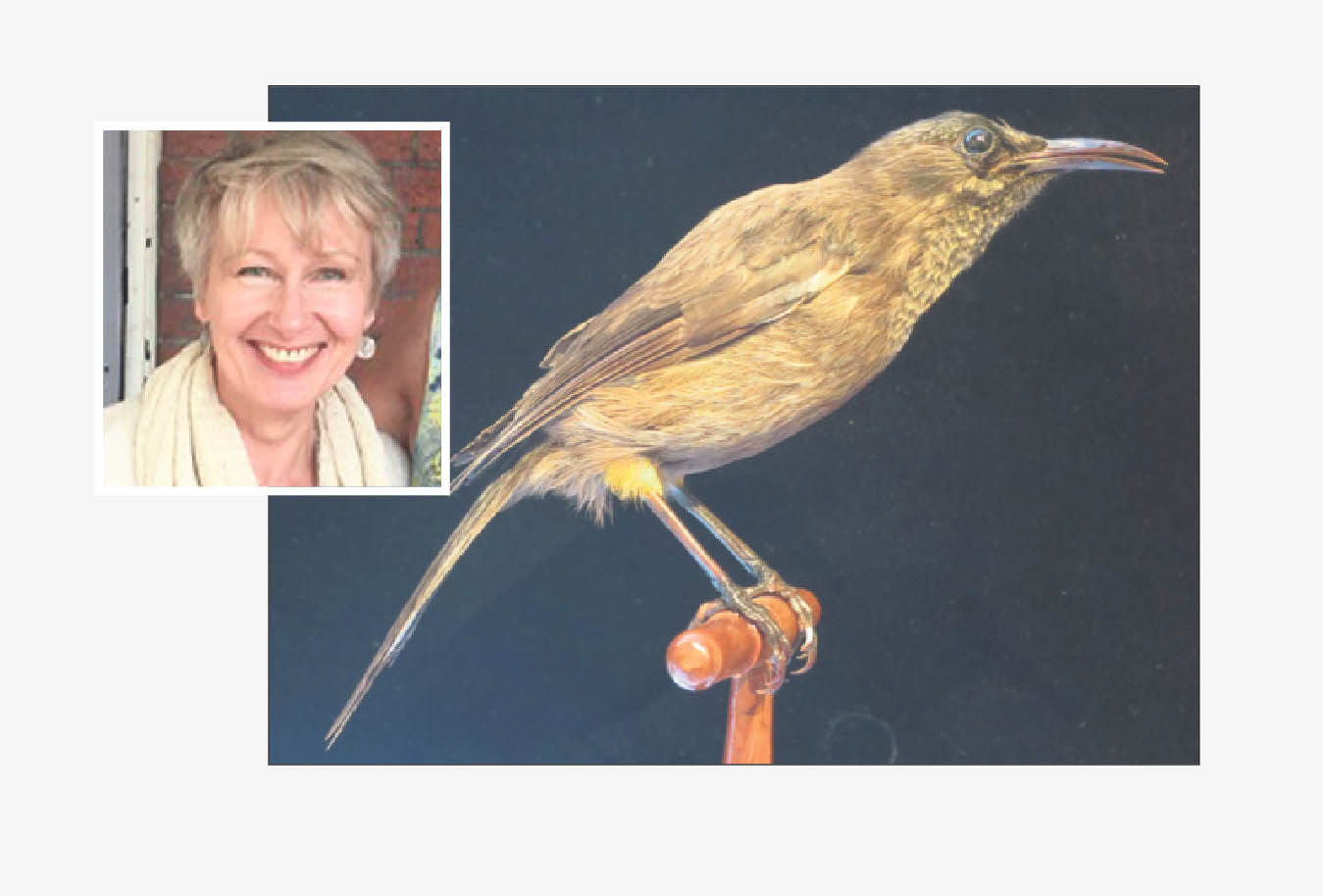Now let’s all rebel against extinction
The loss of wildlife across the world has more relevance to Camden than many people think, says Dee Searle and now’s the time to do something about it…
Thursday, 15th December 2022 — By Dee Searle

Dee Searle; Hawaii’s Kauai O’o bird. [Photo: Hiart / CC0 1.0]
THE traumatic documentary Racing Extinction ends with a short clip of the delicate song of Hawaii’s Kauai O’o bird. He is calling for a mate but that call would never be answered because he is the last of his species.
The O’o officially died out in 1987.
At around 20cm long, with mainly black, brown and grey plumage, the O’o wasn’t our most exciting feathered friend and was certainly not unusual in Hawaii for becoming extinct. Two-thirds of the Pacific state’s bird life – 95 species – have disappeared since human settlement 1,600 years ago, and 26 of the islands’ surviving 38 native birds are officially endangered.
This is all very sad but what’s it got to do with the good citizens of Camden? After all, Hawaii is a long way away and the O’o isn’t exactly a snow leopard, mountain gorilla, or any of the other high-profile endangered species known to environmental campaigners as “charismatic megafauna”.
The point is that the loss of even the most nondescript species has an impact on the ecosystems we depend on for the food we eat and the air we breathe. Closer to home, the Natural History Museum revealed earlier this year that Britain has lost almost half of its biodiversity since the Industrial Revolution, and is one of the most nature-depleted countries in the world.
According to the UK government’s Environment Agency, many of Britain’s habitats have been destroyed or degraded, including 99.7 per cent of fens, 97 per cent of species-rich grasslands, up to 85 per cent of salt marshes, 80 per cent of lowland heathlands and up to 70 per cent of ancient woodlands.
A quarter of mammals in England and almost a fifth of UK plants are threatened with extinction.
Human activity is largely to blame: through destroying natural habitats; introducing non-native species, which compete for food and bring disease; hunting; using body parts for traditional medicine; and eating endangered species. Not to mention environmental stresses caused by climate change.
The United Nations COP15 Biodiversity Conference, currently being held in Montreal, is supposed to be addressing these issues. But it’s a low-key affair compared with the recent UN climate conference in Egypt. Few world leaders are attending, despite a searing opening speech from UN secretary-general António Guterres, who warned that humanity has become “a weapon of mass extinction”.
The chance of reaching meaningful, binding, commitments is remote because countries can’t agree on the scale and speed of action or who should pay.
So what can we good citizens of Camden do, apart from get depressed?
Protecting the urban environment is an important element of the overall biodiversity picture, so we can take a bit of local action. This could include working with neighbours to plant native herbs, flowers or small shrubs around the base of trees on our streets; or get agreement from the council to establish a pocket park or two. Those of us lucky enough to have a garden can allow an area to grow “wild”, or leave a patch of fallen leaves or logs to benefit insects, birds and small mammals. We could also put up a bird feeder, nest box, bat box, hedgehog house or bug hotel.
We should avoid paving or concreting our front or back garden or laying artificial grass; we could also consider digging up any existing cover to enable greening. Ditch pesticides and herbicides, to stop poisoning the land. And do involve children. They are often miles ahead of adults in respecting wildlife and protecting nature, thanks to projects such as the Sustainers Fest run by many Camden schools.
As Susan Griffin said (Speak up now for our own tiny patch of the planet, December 8) this is a great time to exert a bit of Camden-wide influence. The council is currently consulting on its new borough plan. The existing section on climate change and the environment from 2017 contains lots of good intentions.
But, as the UN climate and biodiversity conferences have shown, these won’t amount to much unless they are backed up by specific, measurable, time-related policies.
Camden says it’s keen to hear from residents, so get in there and say what actions you’d like to protect our borough’s fragile biodiversity.
After all, in the words of that evergreen musician Joni Mitchell: “You don’t know what you’ve got till it’s gone”.
Chip into the Camden consultation at: camdenlocalplanreview.commonplace.is/proposals/climate-change-and-the-natural-environment/step1
• Dee Searle is a member of Climate Emergency Camden.